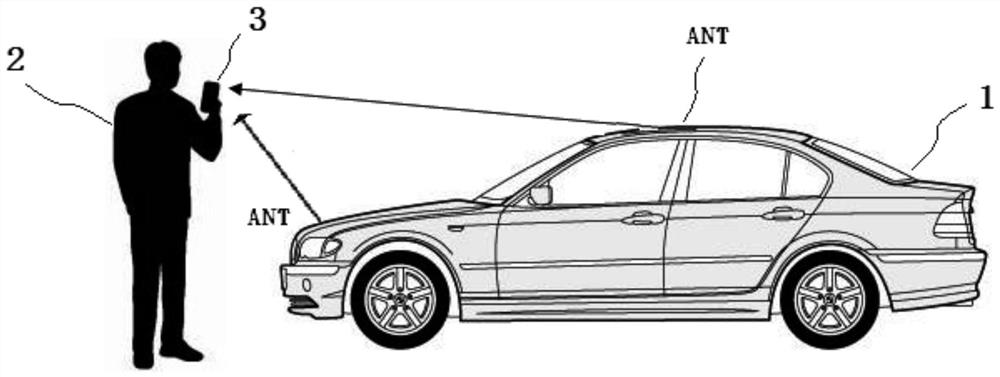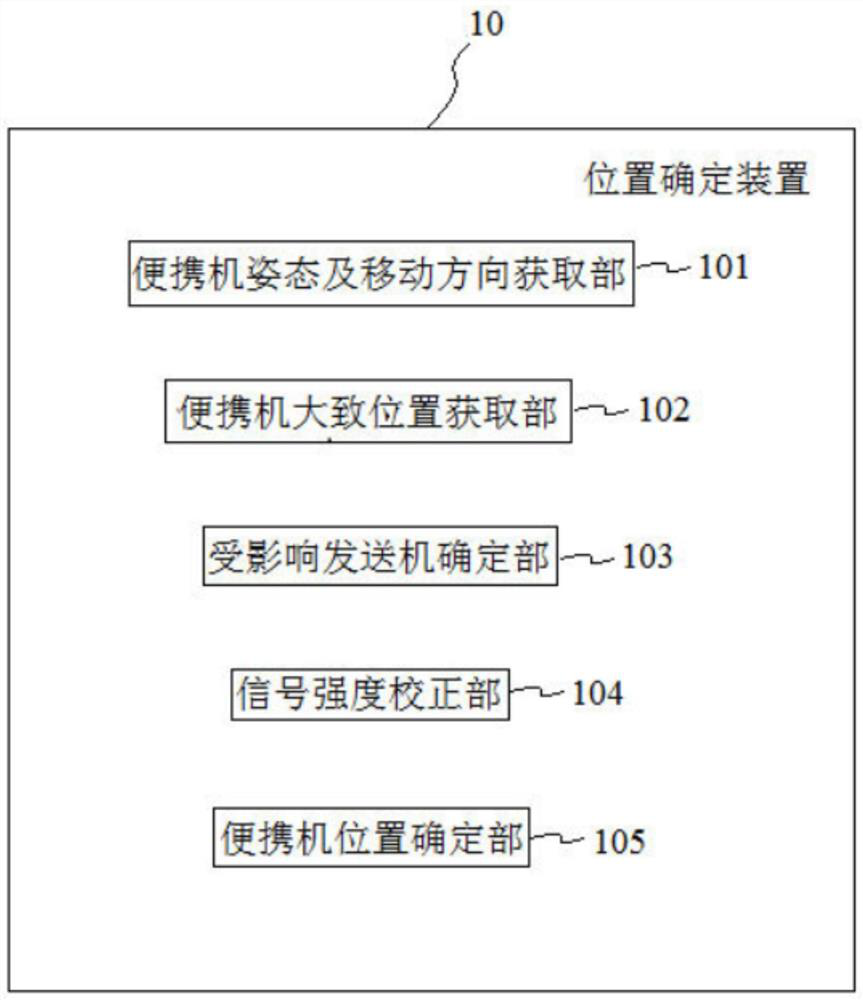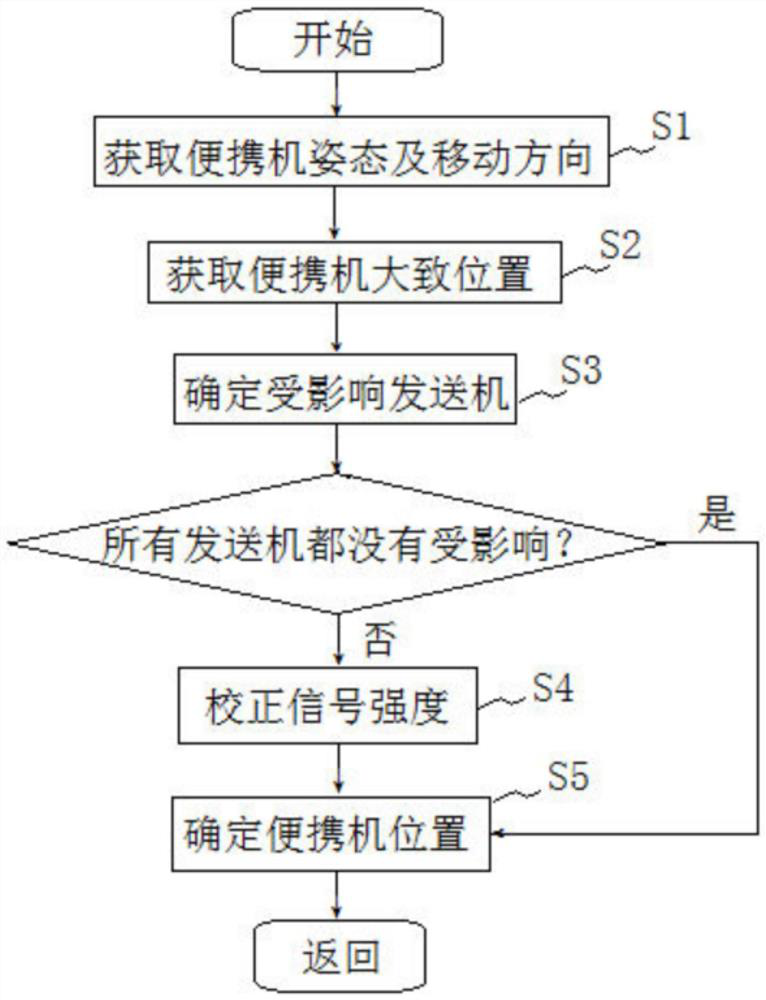Position determination method, position determination device, and position determination system
A technique for determining a method and an approximate location, applied in transmission systems, location-based services, short-range communication services, etc.
- Summary
- Abstract
- Description
- Claims
- Application Information
AI Technical Summary
Problems solved by technology
Method used
Image
Examples
Embodiment 1
[0067] First, if Figure 4 As shown, at point a, the user 2 is far behind the right rear of the vehicle 1 .
[0068] At this time, the portable device posture and moving direction acquisition unit 101 acquires the portable device posture as "put in the right pocket" and the moving direction of the user 2 as f1 according to a plurality of sensors built in the portable device 3 (S1).
[0069] Next, the approximate portable device position acquisition unit 102 acquires the approximate portable device position of the portable device 3 with respect to the vehicle 1 based on the signals received from the plurality of antennas ANT1 to ANT5 ( S2 ). Such as Figure 5 As shown, in the coordinates based on the vehicle 1 , the obtained approximate position of point a is (x, y). As mentioned above, the approximate position may deviate from the real position, but this has little impact on the accuracy of finally determining the position of the portable device, so it can be ignored.
[00...
Embodiment 2
[0076] When user 2 walks from point a to point b, such as Figure 4 As shown, at this time, the moving direction f2 of the user 2 and the direction F2 of the user 2 towards the vehicle 1 are still inconsistent, and their included angle is greater than the angle between the direction F1 and the moving direction f1 in Embodiment 1.
[0077] At this time, the posture and moving direction acquiring unit 101 of the portable device still acquires the posture of "put in the right pocket" and the moving direction f2 (S1).
[0078] Next, the approximate position acquiring unit 102 of the portable device acquires the approximate position (x', y') of the portable device 3 relative to the vehicle 1 based on the signals received from each antenna (S2, refer to Figure 6 ).
[0079] Next, in the step S3 of determining the affected transmitter, since the user 2 is relatively close to the vehicle 1 at this time, it is not appropriate to treat the vehicle as a point. Therefore, in this step, ...
PUM
 Login to View More
Login to View More Abstract
Description
Claims
Application Information
 Login to View More
Login to View More - R&D Engineer
- R&D Manager
- IP Professional
- Industry Leading Data Capabilities
- Powerful AI technology
- Patent DNA Extraction
Browse by: Latest US Patents, China's latest patents, Technical Efficacy Thesaurus, Application Domain, Technology Topic, Popular Technical Reports.
© 2024 PatSnap. All rights reserved.Legal|Privacy policy|Modern Slavery Act Transparency Statement|Sitemap|About US| Contact US: help@patsnap.com










